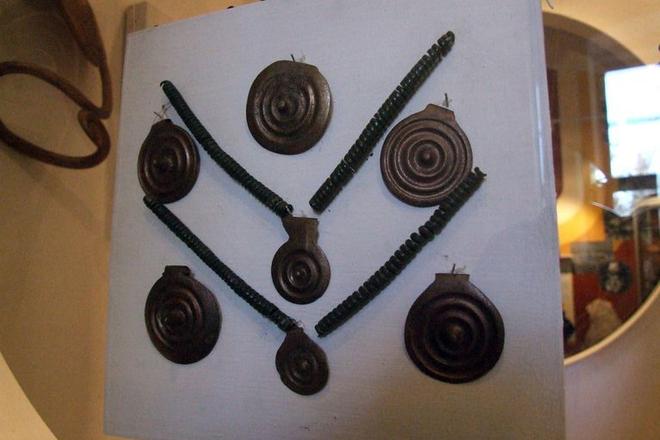THE MUSEUM of the Gortva Region in Hodejov plans to make replicas of bronze treasures that were made in 1500 BC in order to display them. Vladimír Gondáš, the museum’s head, told the TASR newswire that he is negotiating with a sponsor who is willing to make replicas of the Hodejov treasure – three-dimensional bronzes with Mycenaean patterns – that were unexpectedly found in 1961 and are now scattered across four museums.
The patterns on the bronzes indicate contact between inhabitants of south-central Slovakia and representatives of the Mycenaean culture blooming at that time in southern Greece. The decorative motifs of Mycenaean culture have mostly been found in Mediterranean cave paintings.
“In the years from 1500 to 1200 BC, a so-called Piliny culture (named after an archaeological site in Hungary) developed in south-central Slovakia. Its representatives were famous for cremations,” Alexander Botoš, archaeologist at the Gemer-Malohont Museum in the nearby town of Rimavská Sobota, told TASR.
The archaeologist noted that this culture was very skilful in processing bronze, adding he did “not believe that these items were left here by a Mycenaean person and that the treasure from Hodejov points to contacts between the Piliny and Mycenaean cultures”.
He told TASR that scientists will probably never find out why the bronze objects were hidden in the Hodejov hill as the site has subsequently been damaged.
“The treasure in Hodejov was found when extracting stones in castle hill. A shot-firer, János Delamária, a descendant of Italian stonemasons, found the treasure in 1961. He found it in two phases and we still do not know precisely if it is just one treasure or two different ones. In total, 361 bronze jewels and amber necklaces were found as well as clay weights,” Gondáš said.
The museum director added that cooperation with a sponsor who is willing to make replicas of individual items for the museum has started and “the replicas could be so precise that no differences between the genuine treasures and the replicas will be recognisable in their glass display cases without special instruments”.
The Museum of the Gortva Region has recently reopened after the local mansion that houses it was renovated.



 Mycenaean-pattern bronze treasures were found in 1961 and date back to 1500 BC. (source: TASR)
Mycenaean-pattern bronze treasures were found in 1961 and date back to 1500 BC. (source: TASR)